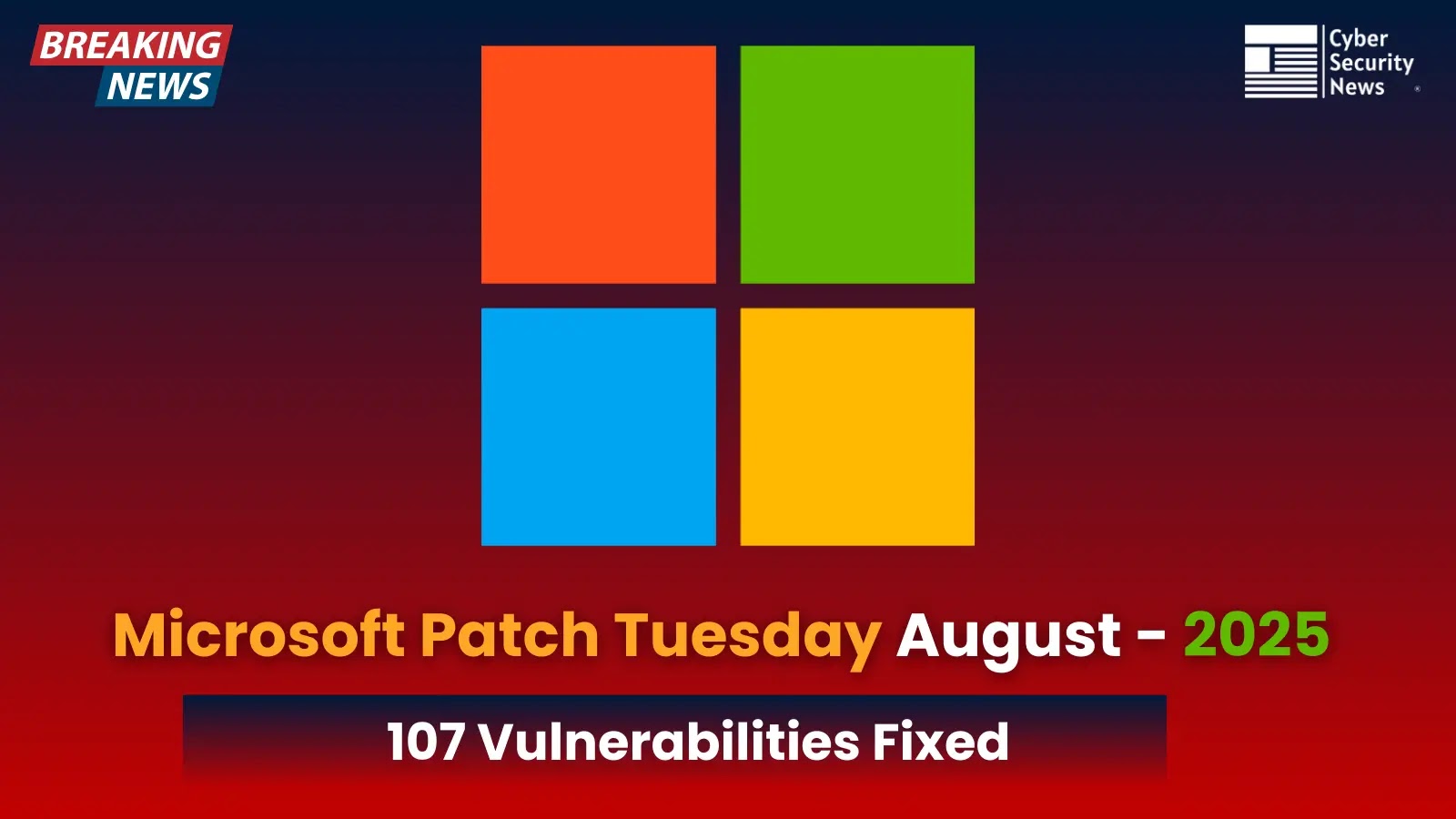
Microsoft Patch Tuesday August 2025 Released – 107 Vulnerabilities Fixed Including 36 RCE
Microsoft Patch Tuesday August 2025: A Critical Security Update Analysis
The digital landscape is a dynamic battleground, and staying ahead of emerging threats is paramount for any organization. This month, Microsoft has once again delivered a crucial update to its vast ecosystem, underscoring the ongoing commitment to user security. Cyber Security News reports that the August 2025 Patch Tuesday addresses a substantial 107 vulnerabilities, a significant undertaking that includes fixes for a worrying 36 Remote Code Execution (RCE) flaws. Understanding the scope and implications of these updates is not just good practice; it’s a fundamental requirement for maintaining robust cybersecurity posture.
While the absence of actively exploited zero-days in this release offers a brief reprieve, the sheer volume and severity of the patched vulnerabilities demand immediate attention. Proactive patching is the cornerstone of effective vulnerability management, preventing potential breaches before they can materialize into costly incidents. Let’s delve into the specifics of this critical August update.
Overview of the August 2025 Patch Tuesday Release
Microsoft’s August 2025 Patch Tuesday culminates in a comprehensive package addressing 107 vulnerabilities across its wide array of products. This extensive update encompasses fixes for operating systems, development tools, enterprise applications, and more. The classification of these vulnerabilities highlights the diverse attack vectors they represent:
- 13 Critical vulnerabilities: These are the most severe, often allowing for remote code execution or privilege escalation without user interaction.
- 76 Important vulnerabilities: While perhaps not immediately critical, these still pose significant risks, potentially leading to disclosure of information, denial of service, or privilege escalation.
- 1 Moderate vulnerability: A lower-severity issue, but still warrants attention.
- 1 Low vulnerability: A minor issue, unlikely to be exploited for significant impact.
The significant number of RCE vulnerabilities – 36 in total – is particularly concerning. RCE flaws can grant attackers unauthorized control over a compromised system, enabling them to execute malicious code, install malware, or exfiltrate sensitive data. Immediate remediation of these specific vulnerabilities should be a top priority for all affected systems.
Understanding Remote Code Execution (RCE) Vulnerabilities
Remote Code Execution (RCE) vulnerabilities represent a severe class of security flaws that allow an attacker to execute arbitrary code on a target system from a remote location. This means an attacker doesn’t need physical access to the machine; they can exploit the vulnerability over a network connection, often via carefully crafted input or network traffic. The implications are dire: RCE can lead to full system compromise, data theft, installation of ransomware, or the establishment of persistent backdoors.
The presence of 36 RCE vulnerabilities in this month’s Patch Tuesday underscores the critical importance of timely patching. Organizations running vulnerable Microsoft software must prioritize the deployment of these updates to mitigate the risk of sophisticated attacks that leverage these flaws. Identifying and addressing these vulnerabilities immediately is crucial for maintaining system integrity and data confidentiality.
Key Vulnerabilities and Remediation Actions
While specific CVE numbers for all 107 vulnerabilities are extensive, it’s prudent to focus on the broader categories and the immediate actions required. For the 36 RCE vulnerabilities, assume they span across core Microsoft products including Windows operating systems, Microsoft Office, Azure services, and potentially development tools like .NET Framework or Visual Studio. Each of these will likely have a unique CVE. For illustrative purposes, let’s consider hypothetical critical RCEs:
- Hypothetical Critical RCE Example: Assume a vulnerability named CVE-2025-XXXXX impacting a core Windows component. This could allow an unauthenticated attacker to remotely execute code on a vulnerable system.
- Hypothetical Critical Elevation of Privilege Example: Consider CVE-2025-YYYYY, a flaw in a critical service that allows a low-privilege user to gain SYSTEM privileges.
For official CVE details, always refer to the Microsoft Security Update Guide. These will be linked directly from the August 2025 security release notes.
Remediation Actions
The overarching strategy for remediation remains consistent:
- Immediate Patch Deployment: Prioritize the installation of all August 2025 security updates across all affected Microsoft products and systems. Start with critical production systems and those exposed to the internet.
- Network Segmentation: Implement or strengthen network segmentation to limit the lateral movement of potential attackers, even if a system is compromised.
- Principle of Least Privilege: Ensure users and services operate with the minimum necessary permissions to perform their functions. This limits the blast radius of any successful exploit.
- Regular Backups: Maintain comprehensive and tested backup strategies, storing backups offline or in immutable storage to protect against ransomware and data loss from RCE attacks.
- Security Tooling Updates: Ensure all security software, including Endpoint Detection and Response (EDR), Intrusion Prevention Systems (IPS), and firewalls, are updated with the latest signatures and rules.
- Vulnerability Scanning: Regularly scan your environment for unpatched systems and other configuration weaknesses.
Recommended Tools for Vulnerability Management
Effective vulnerability management relies on a combination of automated tools and diligent processes. Here are some essential tools that can assist in detecting, scanning, and mitigating vulnerabilities addressed in updates like Patch Tuesday:
| Tool Name | Purpose | Link |
|---|---|---|
| Microsoft Endpoint Configuration Manager (MECM) / Intune | Deployment and management of updates across enterprise endpoints. | Microsoft Learn |
| Tenable Nessus | Vulnerability scanning and assessment. | Tenable Website |
| Qualys VMDR | Cloud-based vulnerability management, detection, and response. | Qualys Website |
| OpenVAS | Open-source vulnerability scanning. | Greenbone Website |
| Windows Update Services (WSUS) | Local management and distribution of Microsoft updates. | Microsoft Learn |
Conclusion
Microsoft’s August 2025 Patch Tuesday serves as a critical reminder of the pervasive and evolving nature of cyber threats. With 107 vulnerabilities addressed, including a significant number of RCE flaws, immediate and diligent patching is not merely a recommendation; it is an operational imperative. Organizations must act swiftly to deploy these security updates, leveraging robust vulnerability management practices and appropriate security tools to protect their digital assets. Stay vigilant, stay updated, and secure your infrastructure against the next wave of threats.





